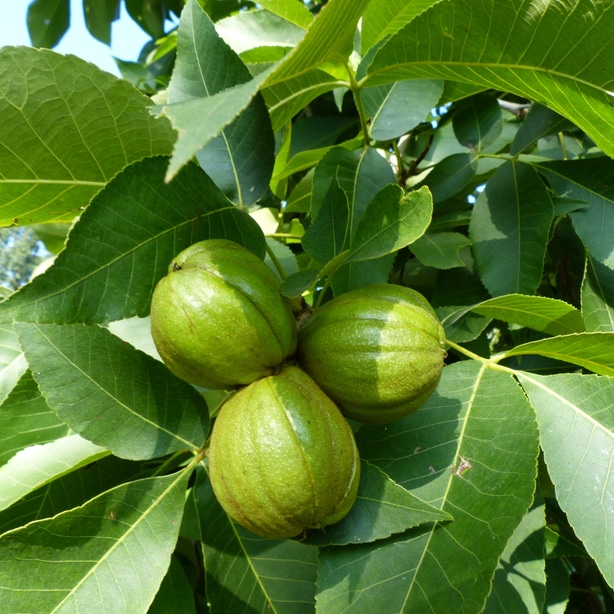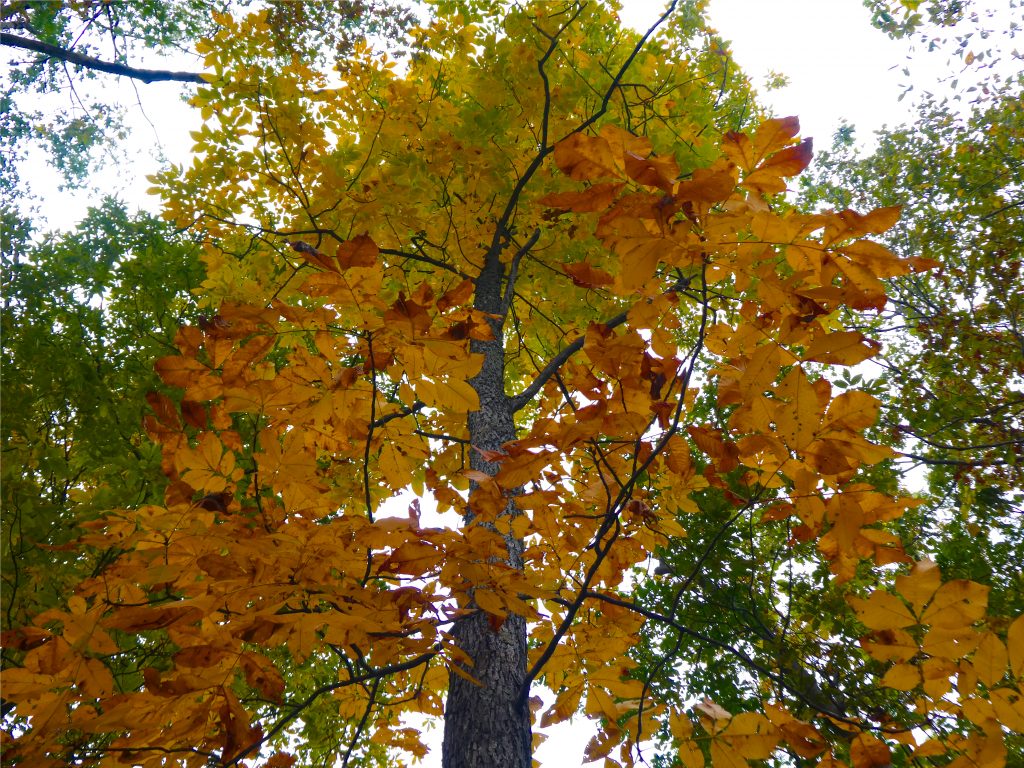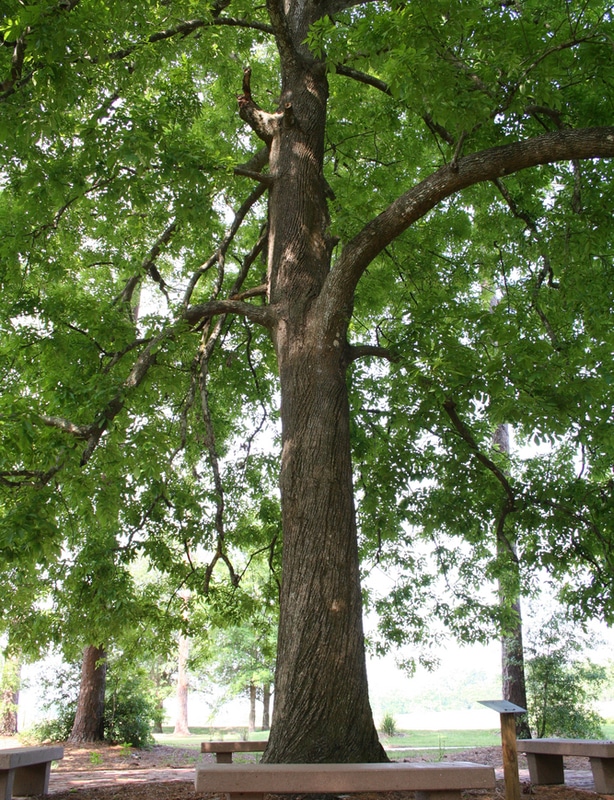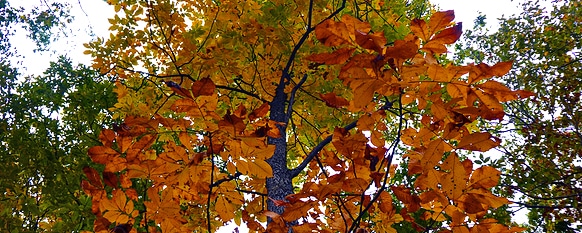I remember being a kid and sitting underneath a tree and marveling at the spread of its canopy. The unique leaves that comprised the canopy were dense and provided me with a welcome reprieve from the heat of the day.
Make sure to also check out our guide on the beautiful tropical plumeria tree. We will show you how successfully take care of it and help it achieve beautiful blossoms.
I found the tree one day when I was exploring my family’s horse farm. It grew in damp soil near the freshwater spring in the bottomland of one of the pastures. It struck me how strong it was. It stood tall and unblemished in high winds that left trees around it broken like toothpicks and scattered on the ground.
The tree was beautiful in the spring, but what always struck me was the myriad colors of its leaves as they turned in the fall. The hues ranged from bright yellow to burnt orange to deep red and every color in between.
Growing up, my grandfather would tell me that this was one tough tree, which is why it became the famous nickname for our seventh president that described his rugged nature. He said that its shock-resistant wood is used in ax and tool handles and that baseball bats were once crafted from it. He finished by telling me that the wood does the pounding whenever a drummer picks up his sticks.
What is this amazing tree that is so much more than a tough piece of wood?
It is the majestic hickory tree.
Given the interesting and irreplaceable roles that it plays, perhaps you’d like to have some hickory trees around your home. If that’s the case, read this article so you’re prepared to cultivate and care for them correctly.

General Information
There are around 18 hickory tree species that comprise the Carya genus. Of those 18 species of this deciduous tree, 12 are native to the United States. The remaining six are spread around Mexico, Canada, China, and India. The Carya genus belongs to the Juglandaceae, or walnut, family.
The hickory tree’s serrated leaves are made up of 3 to 17 pinnate leaflets and can grow to be 2 feet long. These leaflets grow in alternate pairs on the stem and have a terminal leaf blade. Hickory leaflets always occur in odd numbers and appear in the spring after the yellowish-green catkins bloom. Hickory tree leaves appear in various shades of green depending on the species.
After the catkins have bloomed, the fruit, a nut, will appear inside of a husk with sectioned valves. Within those husks are the globose hickory nuts. The shells are usually thick and bony. A notable exception is the thin shell of a pecan.
We know hickory trees for their nuts. Carya is the ancient Greek word for nut. The slow-growing hickory can take between 10 and 15 years to produce nuts.
The bark of hickory trees is very rough to the touch. It has ridges and furrows that run vertically up the tree. The bark can curl out at the top and bottom of the base and give it an almost shaggy appearance. The bark is a grayish hue that darkens as the tree gets older.

The hickory tree’s root system grows outward, but it is distinguished by the pronounced taproot from which nearly all the other roots branch off. The taproot makes it difficult to transport these trees.
The twigs of the hickory have tan, 5-sided centers called piths. The piths are a surefire way to identify the tree once it has gone dormant.
Although the North American hickory species all belong to the Carya genus, that’s where most of the similarities end. The way you plant and care for different hickory trees is basically all the same, but there are some differences between the species that will affect the conditions you must maintain for optimal growth.
6 Most Common Hickories in North America
Kingnut or Shellbark Hickory (Carya laciniosa)
This shaggy barked species does not grow well in alkaline soils, salty soils, or drought conditions. It grows best in moist soil with good drainage.
The leaves grow in clusters and are 12 to 24 inches long. The leaves have 7 to 9 leaflets.
- Height: 75′ to 100′
- Spread: 50′ to 75′
Shagbark Hickory (Carya ovata)
This commonly occurring tree has shaggy bark as well. It tolerates a wide variety of conditions, including acidic soil, alkaline soil, and drought conditions. It requires a large area of well-drained soil that does not have a high salt content.
The leaves are 8 to 14 inches long and consist of 5 to 7 leaflets.
- Height: 60′ to 80′
- Spread: 30′ to 50′

Mockernut Hickory (Carya tomentosa)
This species does best in slightly acidic soil and is tolerant of drought conditions. It requires soil with good drainage capability that isn’t alkaline or salty.
The leaves are compound and are 6 to 12 inches long. They are made up of 7 to 9 leaflets that are hairy on their underside. The terminal leaflet will be the largest on the leaf.
- Height: 50′ to 60′
- Spread: 20′ to 30′
Pignut Hickory (Carya glabra)
This variety is somewhat tolerant of drought conditions but does not fare well in soil with poor drainage. It grows well in a wide variety of soils but is only moderately tolerant of soils with high salt content.
The leaves consist of 5 to 7 leaflets and will grow to be between 8 and 12 inches long. The largest leaflet will be the terminal blade.
- Height: 50′ to 60′
- Spread: 25′ to 35′
Pecan Hickory (Carya illinoinensis)
The pecan hickory is very tolerant of acidic soils but does not fare as well in alkaline conditions. The tree is capable of handling soil with poor drainage capability but not drought conditions or soil with high salt content.
The 9 to 17 leaflets will be narrow and long with a hook-like shape near the tip. The leaves are between 18 and 24 inches long.
- Height: 70′ to 100′
- Spread: 40′ to 75′
Bitternut Hickory (Carya cordiformis)
This tree is also known as the swamp hickory because of its affinity for water. It prefers acidic soil that exhibits good drainage but remains moist. It struggles in drought conditions, in soils with poor drainage, and soils with high salt content. It is typically found in low-lying areas where the soil stays moist.
The leaves will be between 8 and 12 inches long and comprised of 7 to 11 long, narrow leaflets.
- Height: 50′ to 70′
- Spread: 40′ to 50′

Care Guide
Use the information above in conjunction with the proper care and maintenance practices that you’re about to read.
Sunlight Requirements
Every species of hickory tree grows best in full sun to partial shade. This means that the tree will require a minimum of 4 hours of direct, unfiltered sunlight. If this sunlight condition is not met, the tree will not produce as many nuts.
Water Requirements
During the first year of growth, water the tree regularly to ensure the soil stays moist. Water slowly to penetrate the soil deeply. After the first year of growth, water the trees in drought conditions (especially in higher temperatures). If you’re experiencing normal weather patterns, the tree should receive sufficient water from the environment.
It’s a good idea to eliminate any weeds underneath the canopy that can compete for moisture and nutrients in the soil.

Fertilization
Fertilize your hickory trees annually in either the spring or fall. Measure the tree’s diameter five feet off the ground. For each inch of diameter, use 1 pound of a fertilizer with a balanced NPK ratio of 10-10-10.
Spread the fertilizer throughout the area covered by the canopy. Start spreading 3 feet out from the tree’s trunk. Water the fertilizer into the soil to a depth of about 1 foot after you have spread it.
Soil Conditions
Hickory trees are what is known as a climax species. This means that hickory trees are part of an ecosystem that at one time was under a constant state of evolution. This caused changes in the native species and the soil’s consistency and composition. This evolution culminated in a stable and extremely fertile forest environment.
For optimal growth, try to recreate that fertile soil.
Adding Compost
The best way to simulate the conditions of the forest floor is by mixing compost into the topsoil. Compost will supplement and support the microorganisms that enrich the soil and aid in the healthy growth of your trees. Begin by mixing 3 inches of compost 5 feet outward from where the young tree is planted. As the tree matures, continue to add the compost over the entire root system annually.
With the addition of compost, the tree will thrive whether the soil is sandy, loamy, or clay
pH Level
Hickories prefer slightly acidic soil with a pH level between 6.0 and 7.0. Perform a soil test before you plant your trees. If you find that the pH is too acidic or alkaline, you should find another location for your hickory.
Hickory trees have a very long lifespan and it isn’t easy to manage the pH level of a large area of soil over an extended period. You’d be fighting a battle that you would eventually lose.

Growing Tips
Planting
You can plant bare-root trees early in the spring. They are slow-growing and you want to give them as much time as possible to establish themselves before winter.
Dig a hole large enough to contain the entire root system of the new tree. Place the tree into the hole and fill it halfway with soil. Water the tree to moisten the soil and then fill in the rest of the way.
The soil must remain moist while the tree establishes its roots. Through the end of summer, water the soil around the tree whenever you notice it drying out. At the beginning of fall, you can begin watering once a week.
Do not fertilize hickory trees during their first year of growth. Instead, cover the ground around the trunk with a layer of mulch to help it retain its moisture.
Rodent Control
Rodents often damage young hickory trees. Protect your investment by purchasing or fabricating a rodent guard.
You can make your rodent guard with a quarter-inch hardware cloth. Wrap it around the base of the tree and attach the ends
Ensure that your hardware cloth extends far enough up the tree so that rodents can’t stand on their hind legs and feed themselves. You’ll probably need to keep your rodent guard in place for 5 or 6 years.

Pruning
Prune off low-hanging branches so you don’t hurt yourself when you mow the grass. You can also cut back branches that have grown too long.
Any stems or limbs that connect to the base at a sharp “V” angle should be removed as soon as possible. These branches are weaker and more susceptible to being broken and damaging the tree.
Harvesting the Hickory Nuts or Pecans
Gather the nuts after they have fallen to the ground. Crack the shells shortly after you collect them and you can freeze the nuts for safekeeping. Two pounds of whole nuts will yield one pound or 4 cups of nutmeat.


Are mature trees endangered?